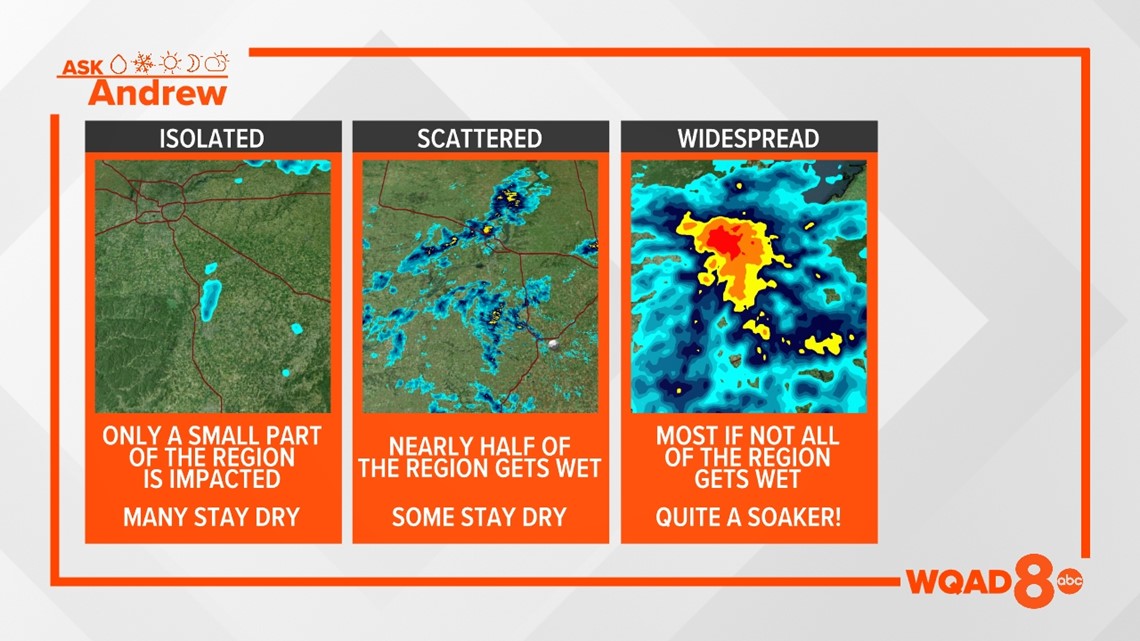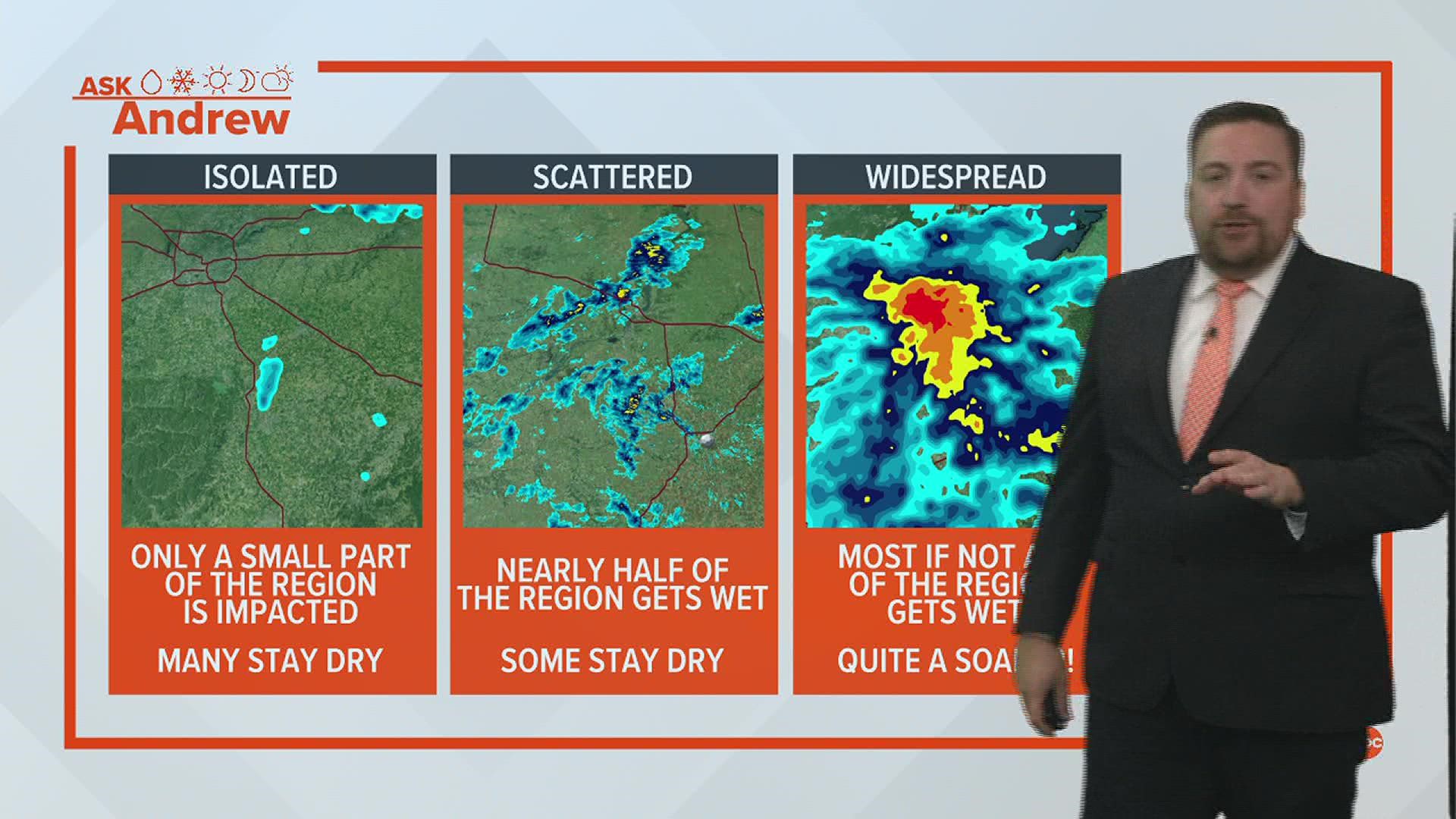MOLINE, Ill. — Many of us are familiar with seeing percentages used with weather forecasts. Whether they are included in text form in a printed forecast or on a graphic, it's one of the many ways meteorologists communicate the coverage of rain, snow and even thunderstorms. However, as we've previously discussed in a VERIFY segment, those percentages don't always mean the same to everyone who reads them. That's why most meteorologists use terms like isolated, scattered and widespread when forecasting rain, snow and storm coverage.
Isolated
Most frequently used during the warmer seasons of spring, summer and fall, isolated refers to the most limited of the three types of coverage. In this scenario, only a small part of the region is impacted and many will remain dry. The radar simulation below shows how roughly only 10 to 20 percent of the region is experiencing precipitation.


Scattered
Used all year round, this indicates that nearly half, or slightly more of the region will experience either rain, snow or storms. There will still be some areas that remain dry.
Widespread
Most if not all of the region is going to get wet. Widespread typically indicates a near 100 percent chance of rainfall. However, that could also mean that it may rain everywhere in the morning and nowhere in the afternoon. You'll want to pay attention to the timing when widespread rain or snow is in the forecast to get the specifics.
Have a question that you would like me to answer for an upcoming Ask Andrew segment? Submit it, here.

